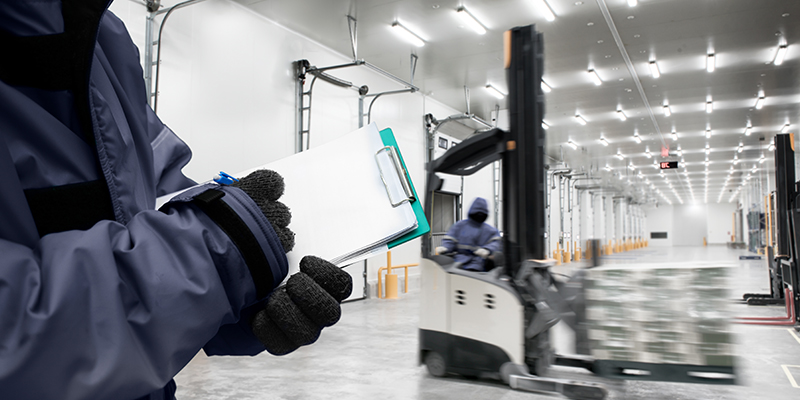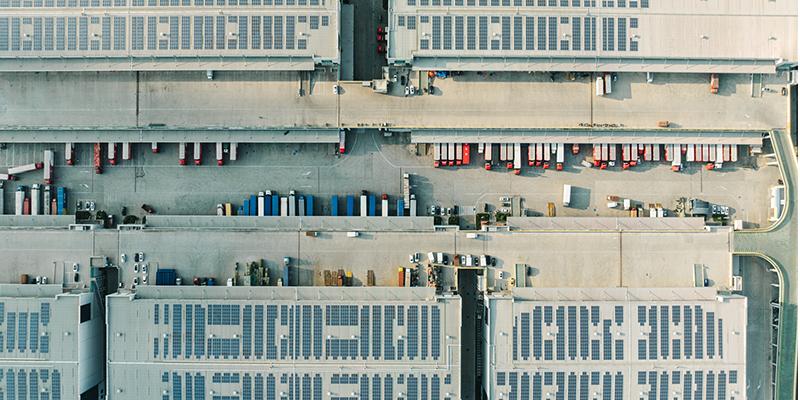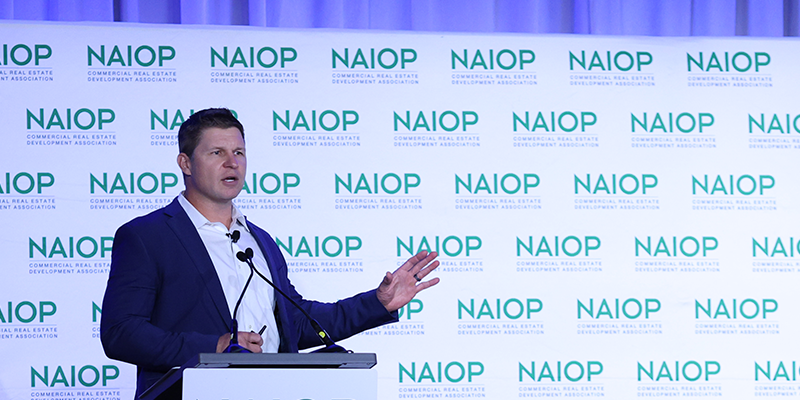Cold storage is a collective term that encompasses multiple types of facilities, agreed the first panel at NAIOP’s I.CON Cold Storage this week in Las Vegas. A record-setting crowd of almost 700 professionals in the sector gathered for NAIOP’s second conference on the topic.
Led by moderator Cory Singer, senior vice president, Griffco Design/Build Inc., panelists included
Andrew Armstrong, chief operating officer, Scout Cold Logistics; Jake Finley, founder and CEO, Karis Cold; Josh Lewis, chief operating officer, RL Cold; Scott McGarity, executive vice president, Industrial, Barber Partners; and Anthony Rinaldi, founder and managing principal, Saxum Real Estate.
The four asset classes that coalesce under the common term of cold storage are:
- Public refrigerated warehouse (PRW), in which third-party logistics (3PL) companies operate facilities for food manufacturers and processors.
- Food manufacturing and food processing, where product is leased and operated by the tenant (think companies like Kraft-Heinz and Ocean Spray).
- Grocery and e-commerce, where traditional grocery and food service providers distribute product.
- Pharma and life science, used for medical services.
“The site selection, the ways buildings are designed, the pro formas – everything about those properties differs based on these asset classes” said Lewis. “This makes spec development extremely difficult because the design and operations are all unique and different.”
Singer asked panelists to compare how market conditions are today versus NAIOP’s I.CON Cold Storage 2023, and how supply and demand have changed. McGarity said that demand has slowed because of challenges in the economy and skyrocketing interest rates. “We’ve seen a lot of clients with high interest but who are slow to sign leases,” he said, noting that he expects demand to go up in 2025.
Armstrong agreed that demand has been slow over the last year, and the lifecycle for leasing decisions has been drawn out.
Lewis circled back to the four asset classes under cold storage and how demand differs for each, which require deeper conversations to understand the fine nuances and when to push and pull on different markets. “Putting up a PRW in one area might make zero sense, but a pharma and life science asset could be a slam dunk.”
Singer asked the panel what was creating surging interest in the sector even as it experiences an overall softening of demand.
“We’re still seeing the highest demand for cold storage across verticals,” Rinaldi said. “The slowing is based on fears in a high-interest rate environment and election year.” He noted that cold storage differs from other products, and it inherently takes longer to do deals.
Finley said that demand is very market specific and while deals do take longer, he feels the patience is lower as the dollar value is larger. “Tenants don’t always know what they want, and no building is perfect.” Compounded by an election year concerns and the recent port strike, groups are rethinking their supply chain strategies.
Lewis agreed that demand depends on asset class, saying that areas around ports are desirable due to importing and exporting. “Food manufacturing and processing groups are reimagining the cold chain and considering if they can manage production, distribution and operations.”
“Dallas has more Class A supply than ever before,” said McGarity. “By the fourth quarter, we’ll have 1 million square feet of 50-foot-clear full-freezer buildings. We expect to backfill that very quickly due to population growth and the amount of food that comes out of Texas.”
Armstrong said that functional obsolescence due to the age of the majority of product is impacting the overall sector, particularly as companies require more automation and efficiency. “Those requirements are going to be huge drivers of demand for the foreseeable future.”
“We are in a world where sustainability matters, global companies with operations around the world who want low-carbon emissions and energy reduction in their properties in the U.S.,” said Lewis. “The two biggest costs in any of these buildings are labor and power, so if you can drive down power costs with world-class solutions, you can hit key metrics and goals that companies have committed to achieving.”
Rinaldi agreed that modernization in the supply chain – and particularly in cold storage buildings – is driving energy costs down by 50%. In some of the oldest buildings, it can be more than that. “When energy costs are multiple six figures per month, those are real numbers.”
Lewis shared an analogy to emphasize how newer facilities operate better. “Imagine your old cooler from the 1980s that you’d take to the beach with your drinks for the day inside. By the end of the beach day, all that ice had melted into water. Now think of a Yeti cooler of today. Seven days later, it will still have ice. It’s a more sustainable product with energy in mind.”
Finley said that in 2019, costs were half of what they are now for development. “Today, costs are around 60-80% higher. Rents have grown as well, but not two-times like construction costs have. Capital markets, particularly the debt markets, are a real challenge right now. Overall yields have tightened substantially, and tenants are willing to pay for modern buildings.”
The biggest challenge is in the ability to provide necessary power to operate the facilities. “In literally every market, electricity is the number one question,” said McGarrity. “We look at this as a primary component in site selection.”
Rinaldi noted that more capital is flowing into the space. “I’ve had an uncountable number of conversations with capital partners who are working to understand cold,” he said. “There are investors getting more comfortable, but the average deal takes 2-3 years and the last 24 months have been the most volatile since the Great Recession. It’s going to take a few more years to watch it inherently mature. Industrial remains the darling of the institutional investment world for good reason.”
Looking ahead for 2025, the panelists agreed that much hinges on the November election. They said companies will continue to be slow on decision making, but with growing populations and rapid obsolescence, demand will continue.
“Real estate was hit hard by rising interest rates,” said Rinaldi, noting that as investors get comfortable with lowered interest rates, they’ll have more confidence in moving forward.
In closing, the panelists shared their outlook for the future.
“As an asset class, there’s a lot of spotlight that comes along with Lineage’s initial public offering (IPO),” said Armstrong, “and there’s tremendous opportunity in front of us.”
“There is terrific opportunity, but you must have the right partners in equity, debt, development and construction,” said Lewis. “It’s always risky, but the right partners make all the difference.”
“We are institutionalizing a non-institutionalized asset class,” said Rinaldi. “It touches the lives of every single person every day. It’s great to be on the forefront and we’re in early innings with a lot of abundance ahead of us.”








